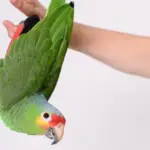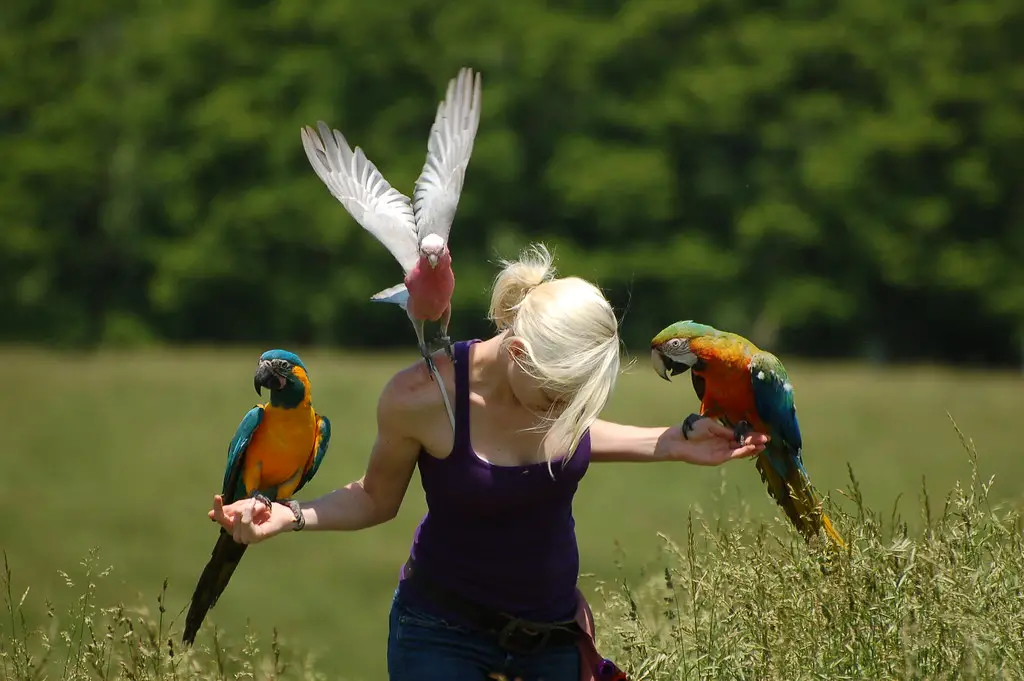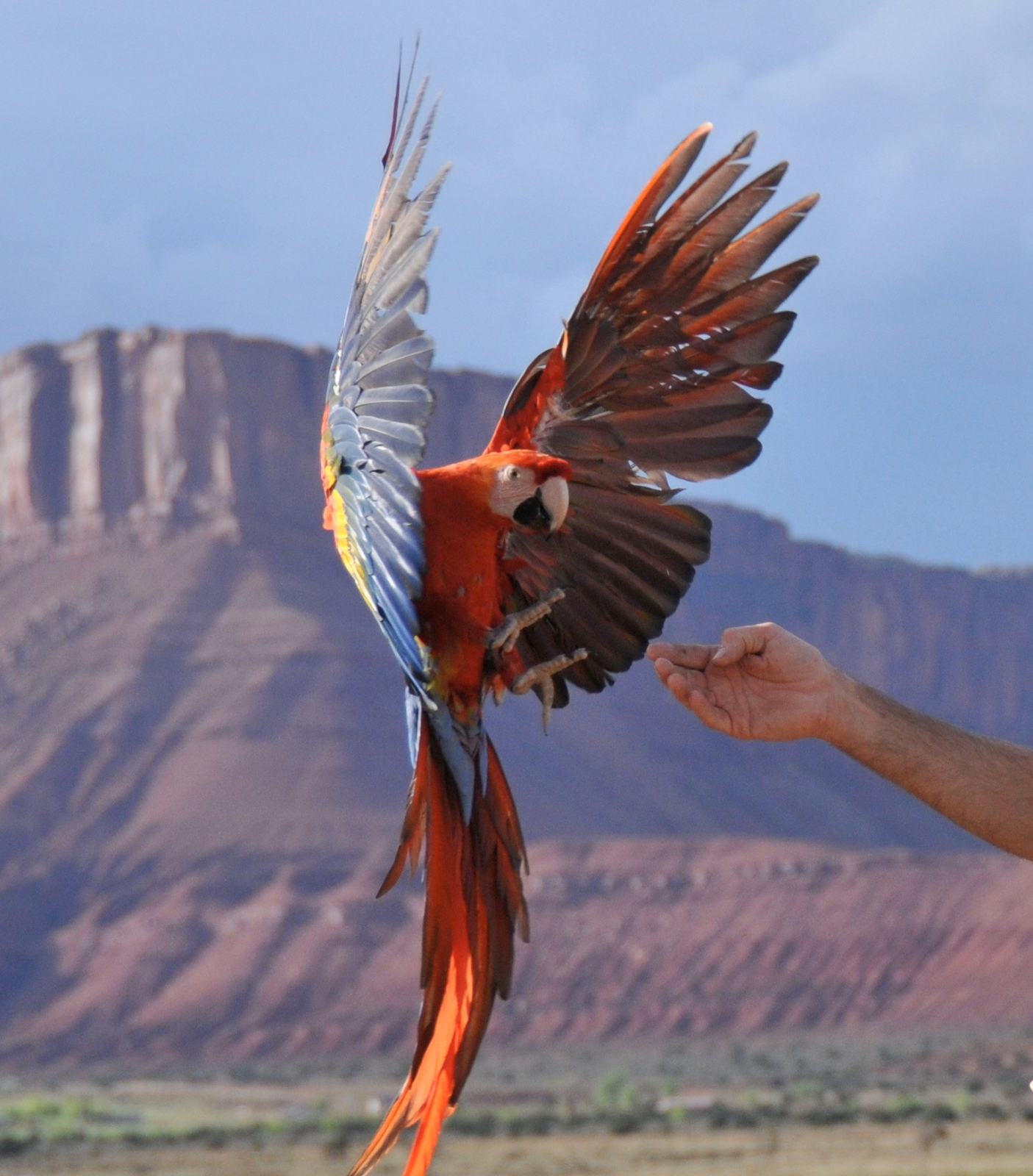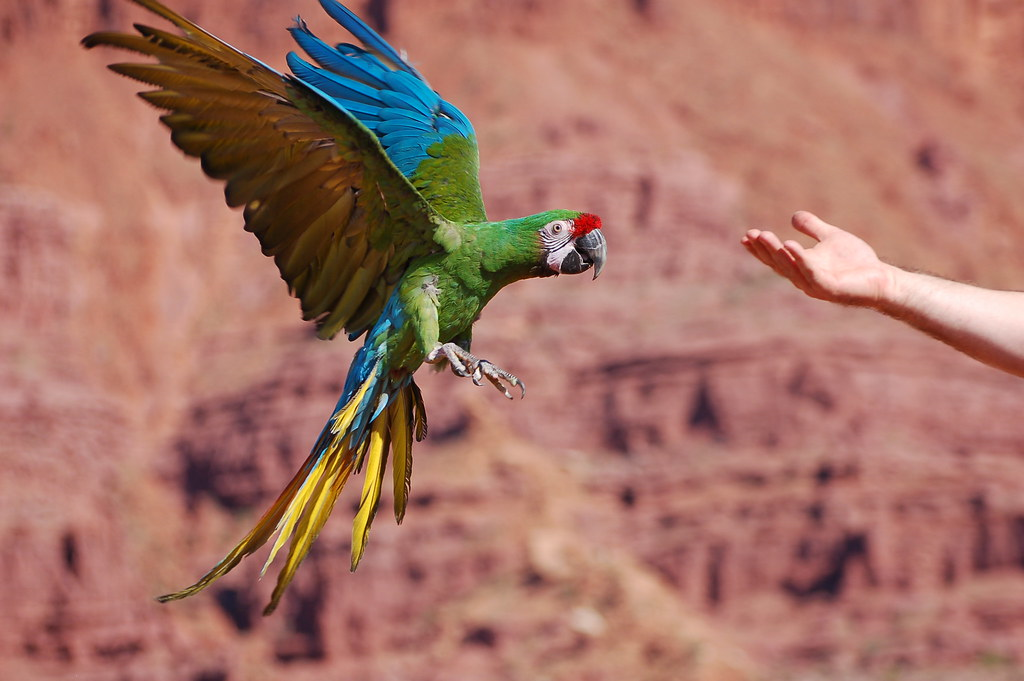Parrot Flight Training, Each species of parrot has its own flight (slow flight, fast flight, short distances…), but all species of parrot can practice free flight, I mean all. But one species defy this rule: the kakapo Strigops halophila). This endemic New Zealand parrot is the only non-flying parrot in the world. Fortunately, this parrot is not one of the birds kept in our homes because the wild populations are very small and are the subject of conservation programs.
My Parrots First Reaction To the Idea of Free Flying
SOURCE:MARLENE MC’COHEN
Free flying parrot
The feathers and wings allow the bird to support its body in the air. It is the forward movement of the wings that allows the bird to move forward. And it is mainly the action of diets (the large feathers on the tips of the wings) that propel the body of the bird forward. The wings, therefore, act as an “engine” if they are in the “forward” position. But they can also serve as a “brake” if they are in the “reverse” position during landings to reduce speed and limit the impact on the legs and the rest of the body. In this case, it is especially the action of the secondary and tertiary regimes that is important (these are the large feathers of the primary flight feathers to the body).
Free Flight Parrot Training Guide
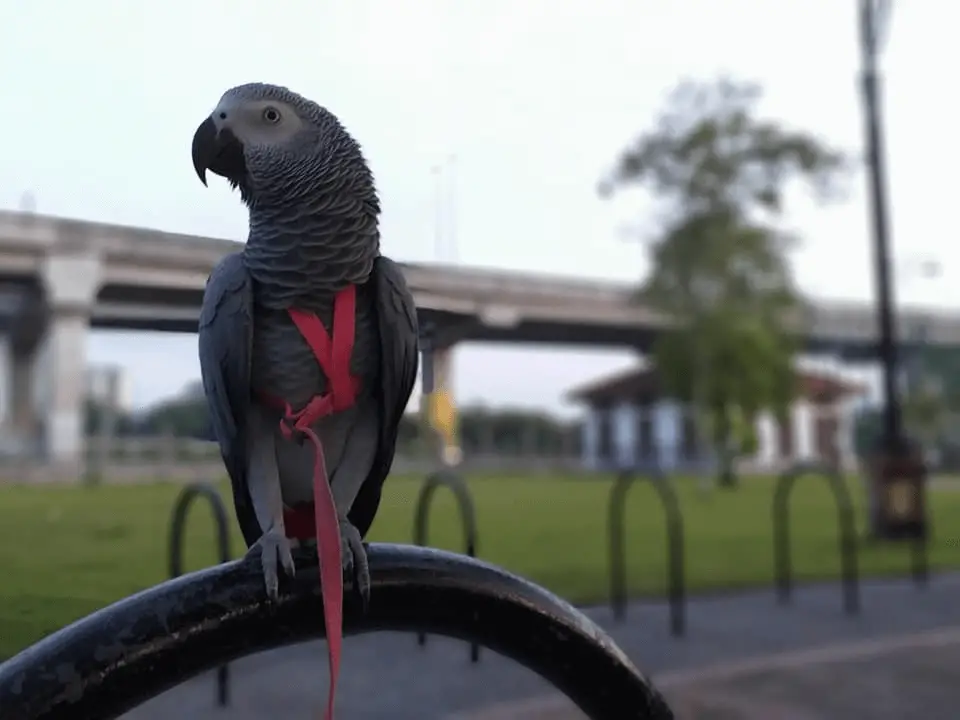
The most common theft among parrots, like many birds, is beaten theft. This flight requires great effort from the pectoral muscles and is very energy-consuming. (This last data is very important and must be kept in a corner of your head for later!)
The wingbeats in parrots are quite fast, except in large macaws (which have a rather slow wingbeat).
tail feathers also play an important role in flight. They allow the bird to move. They, therefore, act as a rudder.
Training Parrots to Fly Recall
SOURCE:wingsNpaws
Parrot free flight
What is a parrot free flight?
Free flight is above all a “conditional freedom” that we offer to our bird. It is imperative to ensure his return, this is called the recall. This exercise should be done BEFORE any outdoor outing, in many situations, and always safe. As long as this recall exercise is not acquired to 200% you should not take out your bird.
Free flight presents risks, you have to be honest. Risk of losing his bird, risk of injuring him, risk of being attacked (by a raptor for example), risk of him eating unadvised food… This is why I highly recommend that you do not take the Fly lightly and practice it only if you and your bird are ready for it. Be accompanied by free flight professionals. Knowing the risks, I guide you towards a safe practice, I advise you on the actions to be taken, the steps prior to free flight, the management of the unexpected…
We often say that only the bird needs training. It’s wrong! Outside you form a buddy with your bird, it is on this relationship and this confidence that binds you that free flight is based. You must, therefore, like your bird, have undergone training.
Free flight macaws
SOURCE:BirdTricks
Parrot free flight
- Above all, free flight is physical exercise. It allows the bird to use its body differently from what it can do in an aviary or in the house. I told you earlier that this physical activity was very energy-consuming. In fact, free flight requires a lot of muscles, and these muscles need energy to function. A free-flying parrot will need 20% to 30% more energy than a parrot that remains inactive in the living room!
- Since it is food that provides energy, it must, therefore, be in suitable quantity, of very good quality, and rich in protein.
- Free flight has a very positive influence on the mind of your parrot. It offers him freedom of choice that captivity often does not allow him. He chooses his trajectories, his perches, his flight mode,…
- Free flight enormously builds confidence: trust on the one hand, but also confidence in yourself, which is so important in your daily pairing. The free flight should be a pleasure for the bird, not a constraint. We must, therefore, respect his desire or refusal to participate in this activity.
Parrot in flight
SOURCE:MARLENE MC’COHEN
Caring for your bird
A free flight bird must be in perfect health and its plumage in very good condition. Its feathers ensure good stability in flight and control of its trajectories. Whether at the level of the wings or the tail, they must, therefore, be complete, in good condition, and present in a fair manner.
Adequate facilities and a good diet are guarantees of good quality plumage.
Parrot Flight Training
Flight training is a special exercise that deserves to be described here because the owners’ questions about it are numerous. Indeed, for owners who decide not to retrieve the wings of their parrots (that is to say, cut some feathers to prevent theft), it is advisable to work the recall (action for the bird to return to his master flying). Thus, if the bird escapes one day (which can always happen even if the bird lives indoors!), The owner will have more facilities to recover it.
Even if all the birds know how to fly instinctively, a parrot without training will not return to its owner and may even be recalcitrant to fly (he will prefer to move while walking). Thus, the training must be progressive with first very short reminders (a jump of a few centimeters to get a reward) and then longer and longer, until the bird takes a liking to the flight and goes exploring his territory before returning to his master. Whenever he returns to his trainer, the bird must be rewarded with a great deal of voice and candy
For owners who can not work in an aviary and are afraid to work directly free flight (that is to say without hindrance for the bird), there are harnesses adapted to the different sizes of Psittacidae. A lot of patience is needed to teach the bird to tolerate the grip of the harness on him, but once he has accepted it, the exits can be done safely, thus providing a lot of fun both to the owner and also to the parrot. Some people attach a strap or chain as a leash to the bird’s ring to replace the harness. Nevertheless, this practice is to be avoided because of the very important risk of lesions on the bird (irritation of the skin, wounds, fractures …).
African grey flying
SOURCE:Howcast

